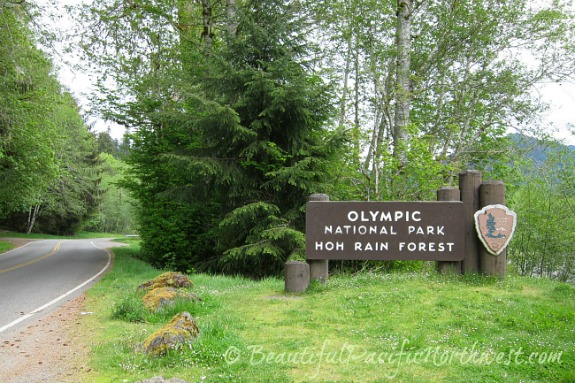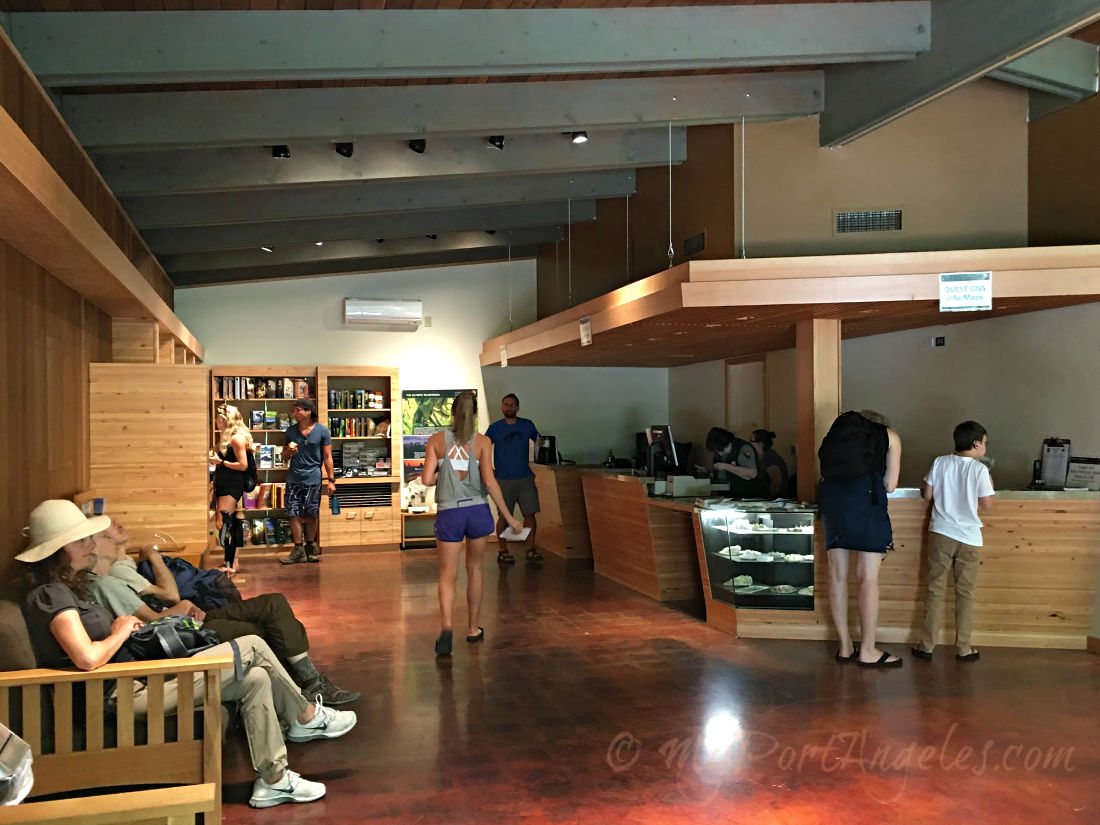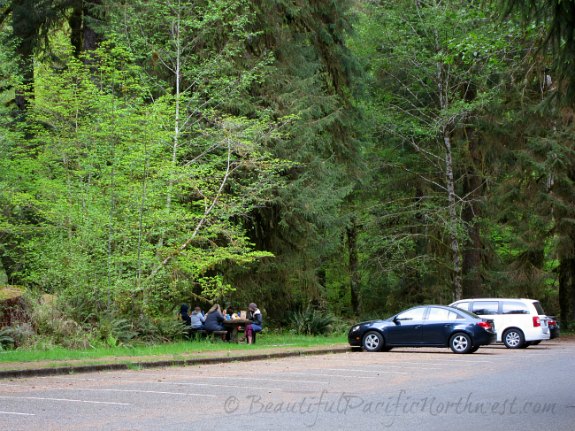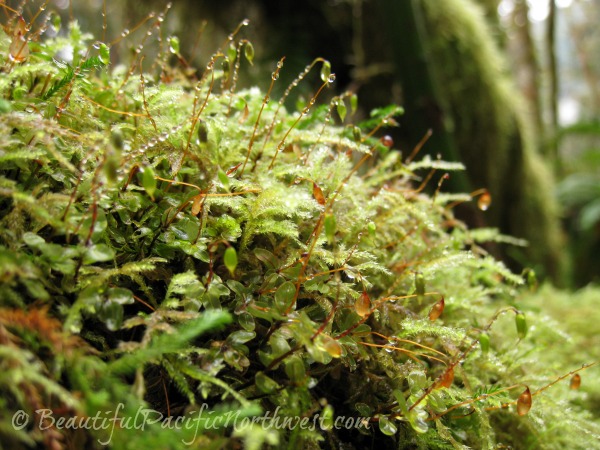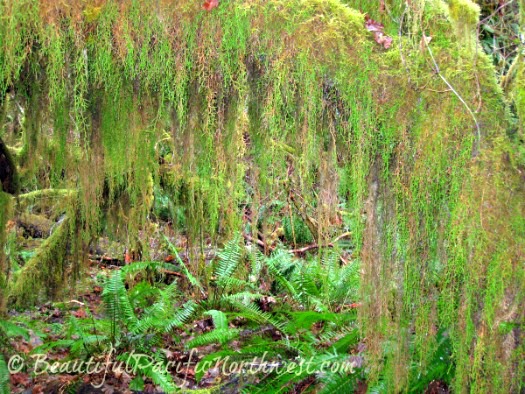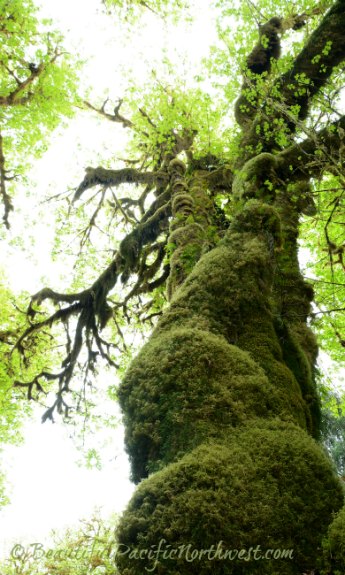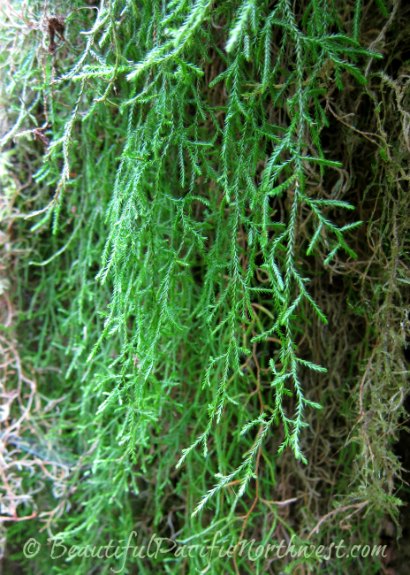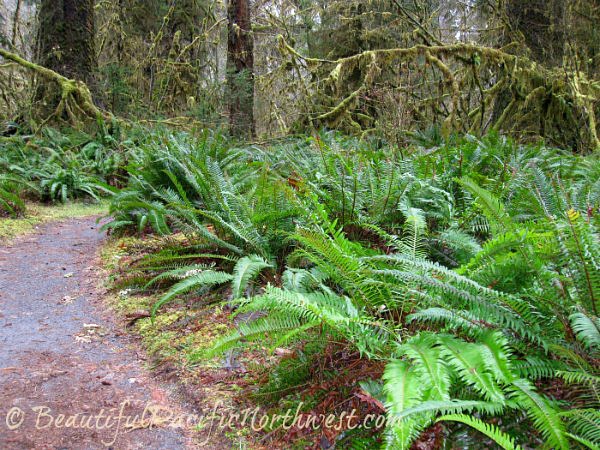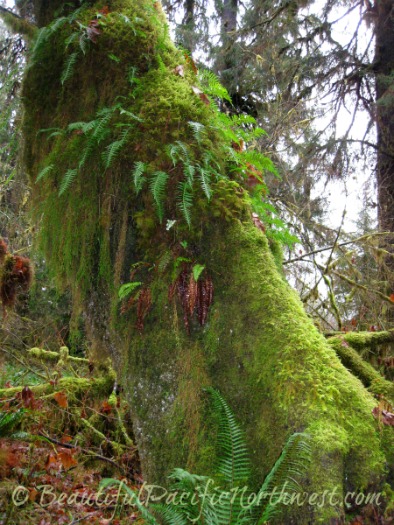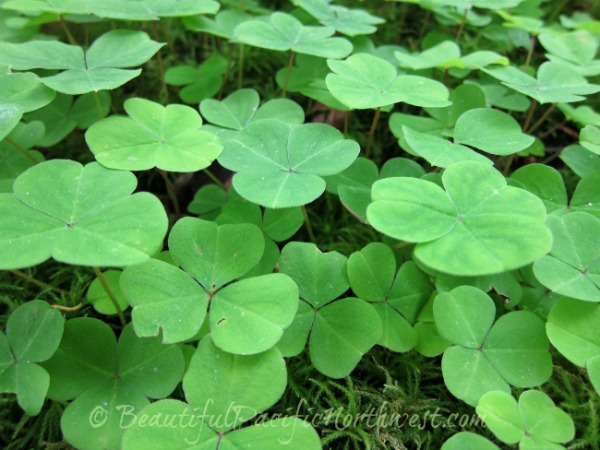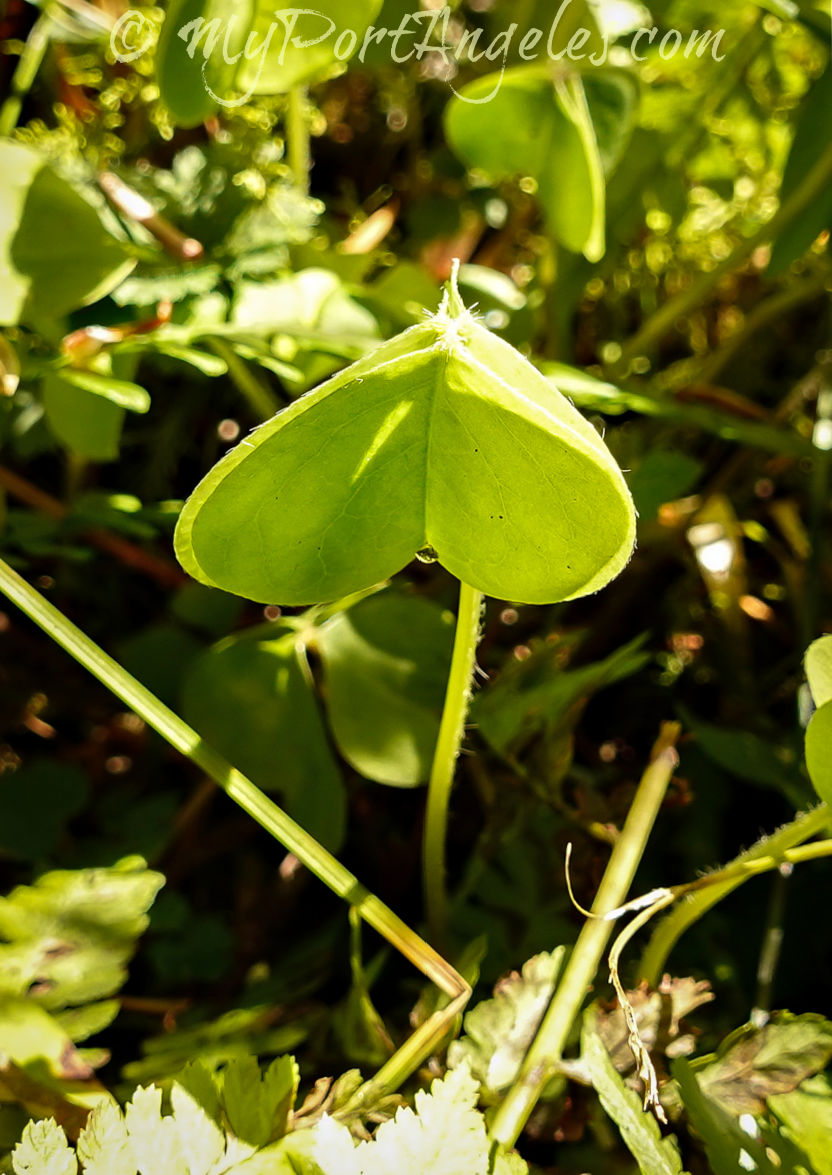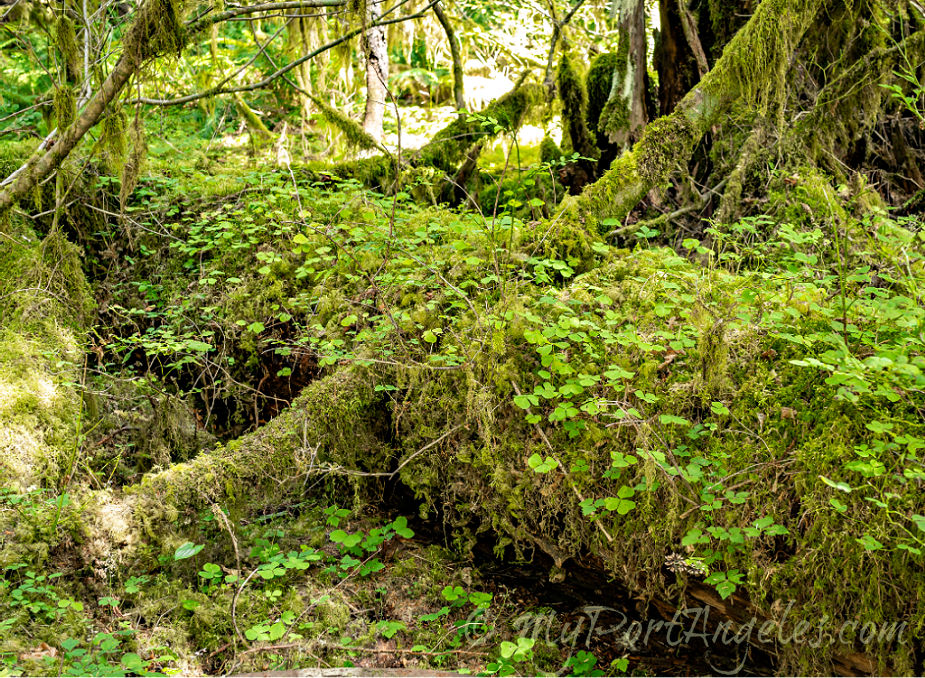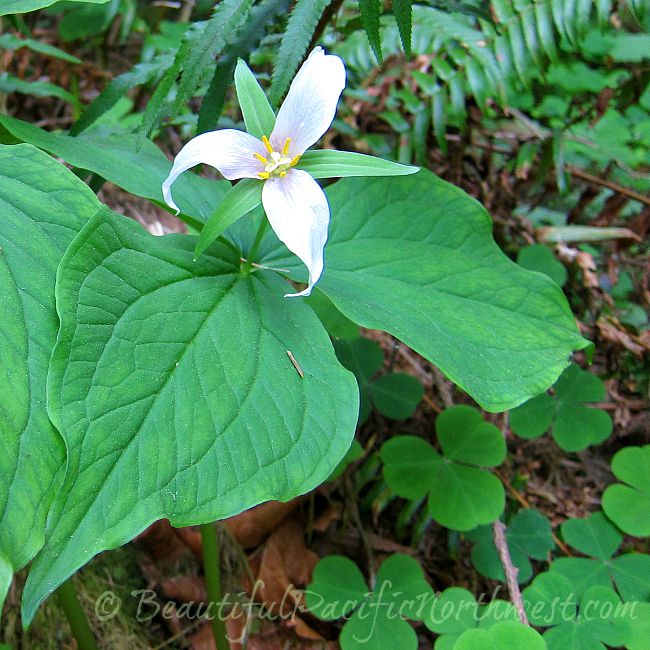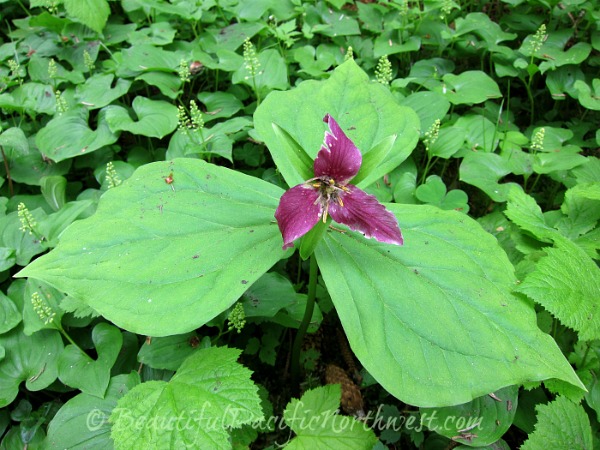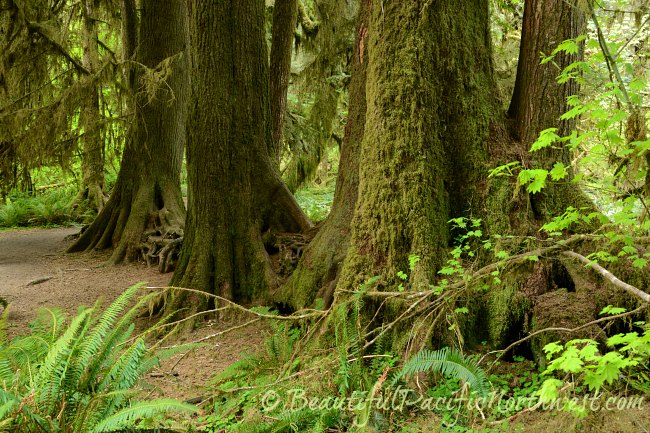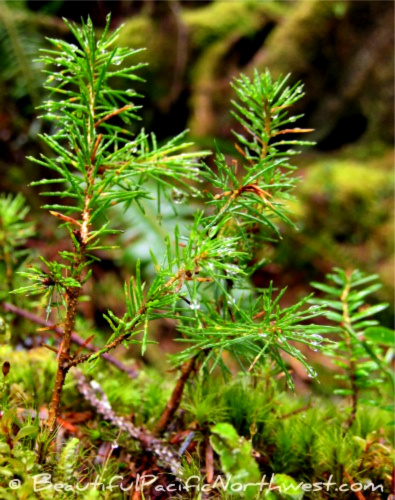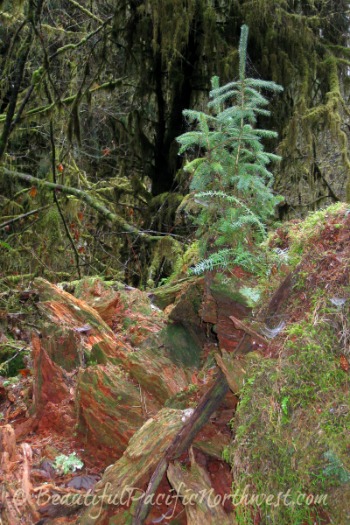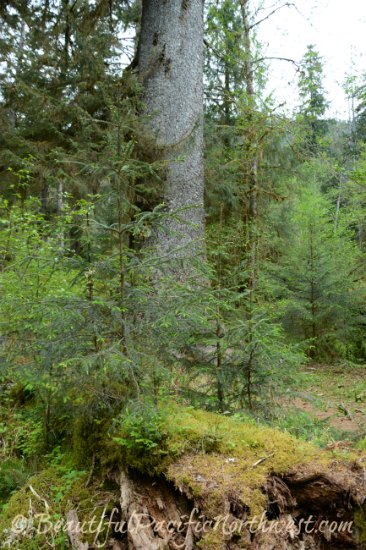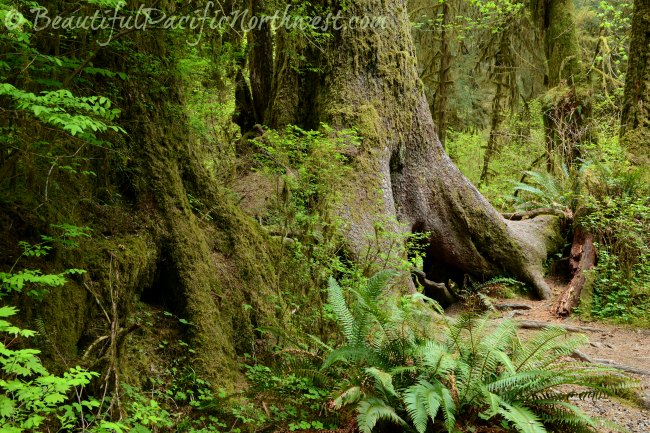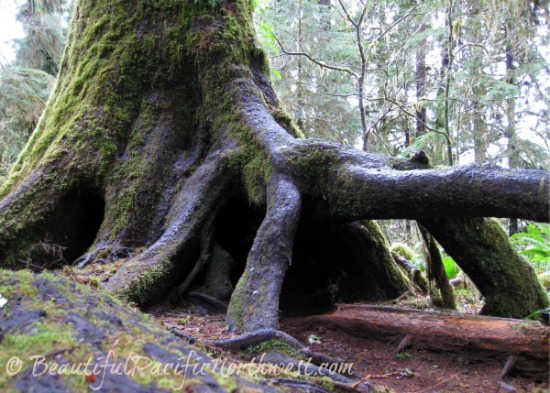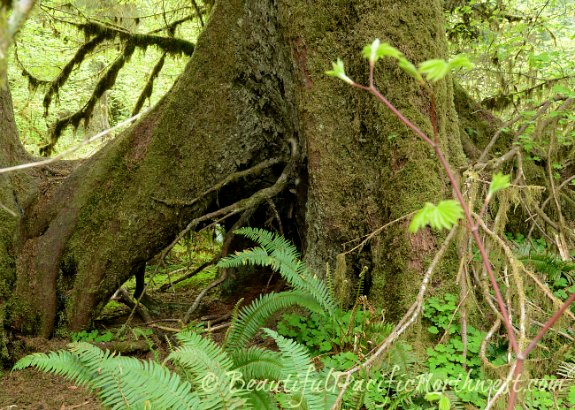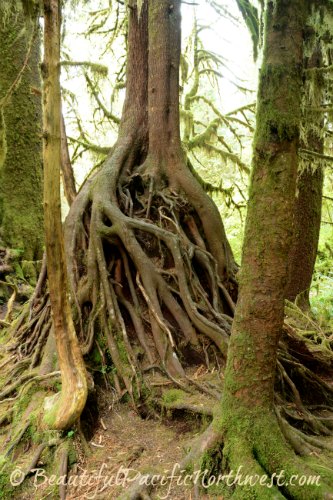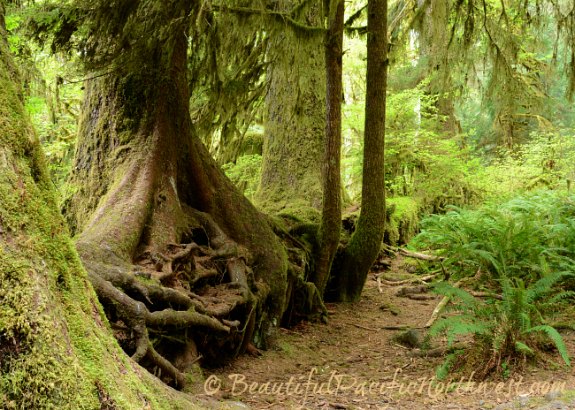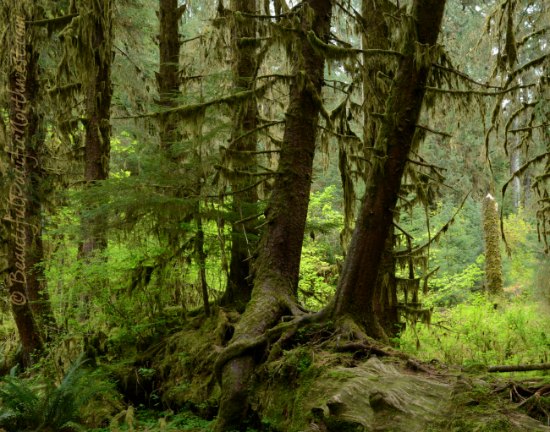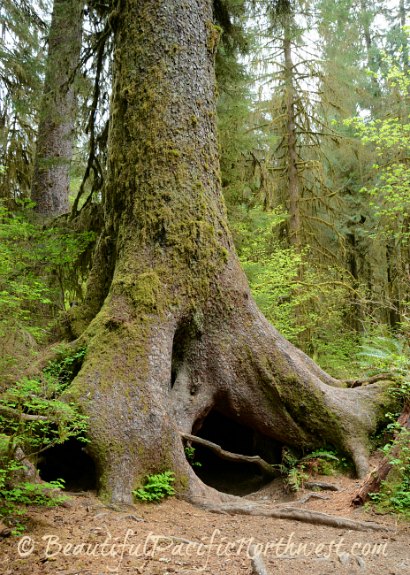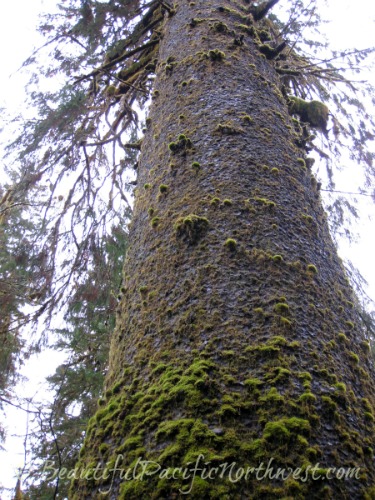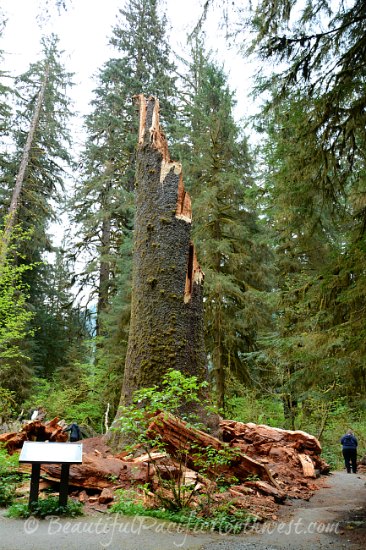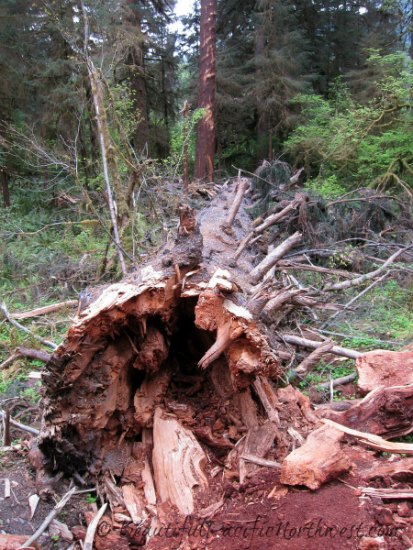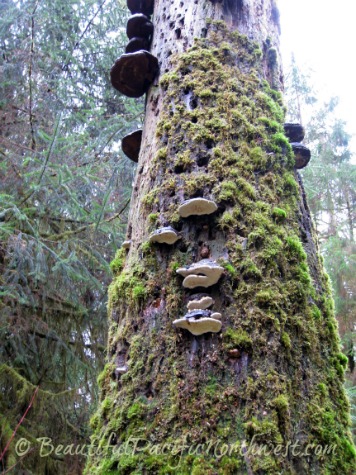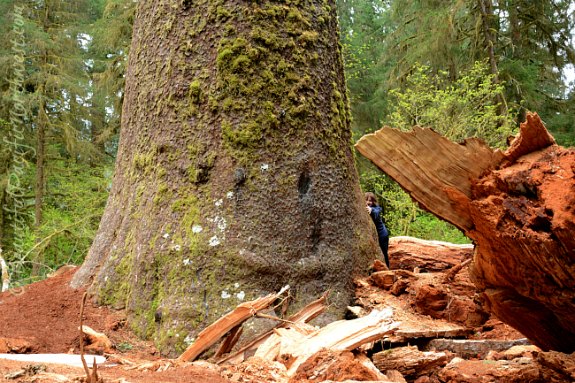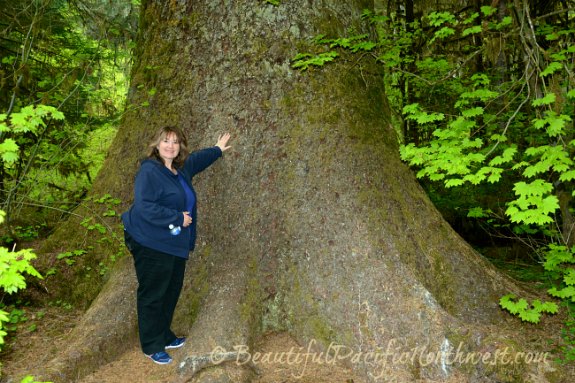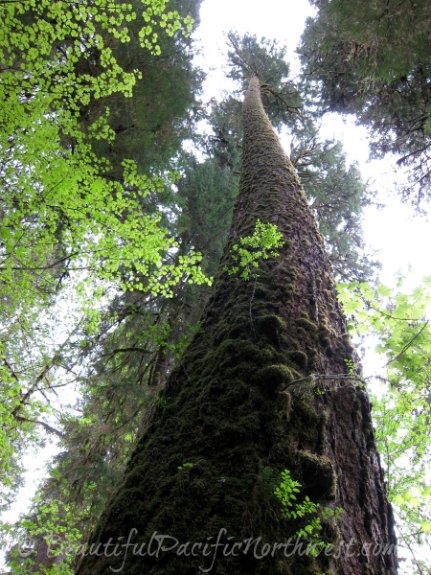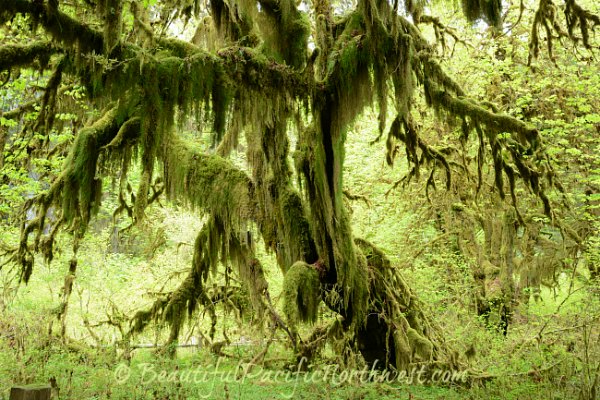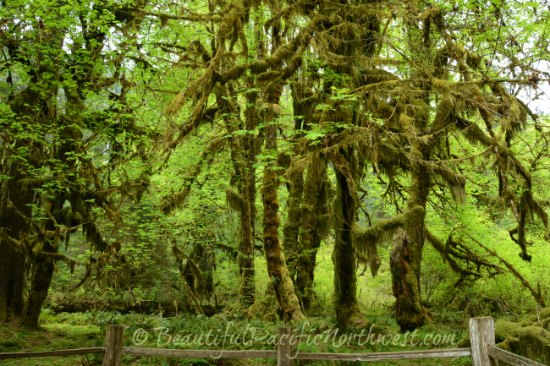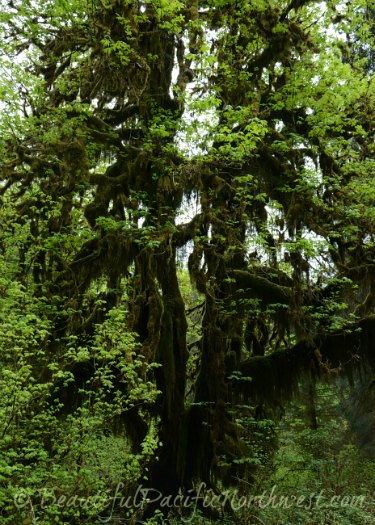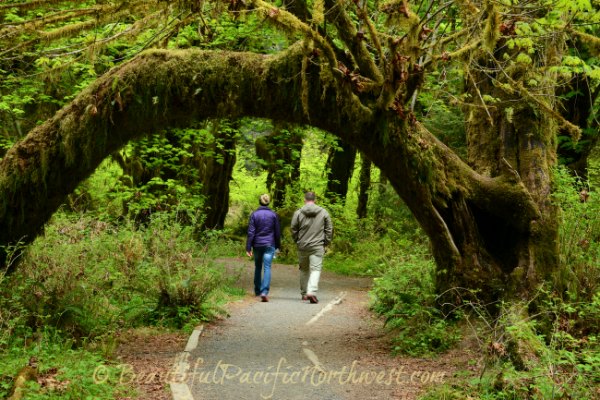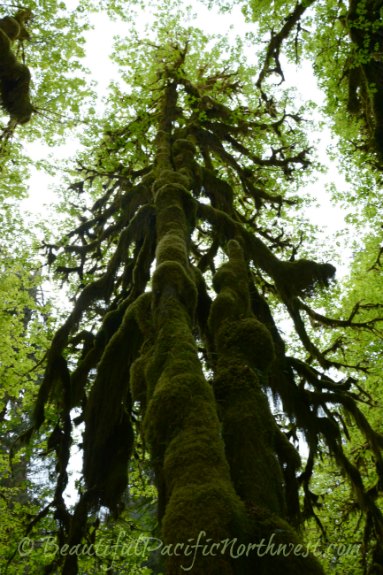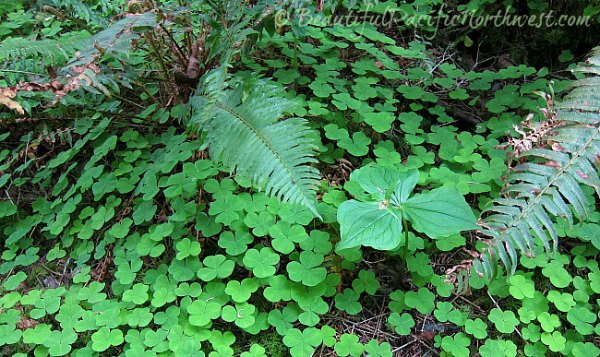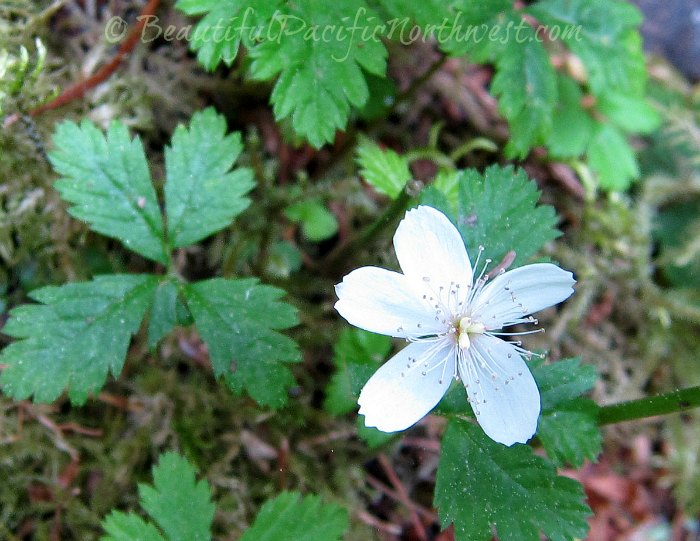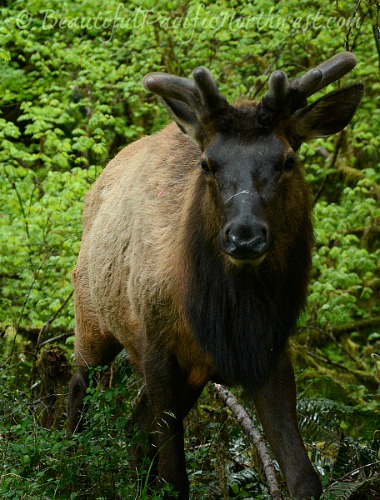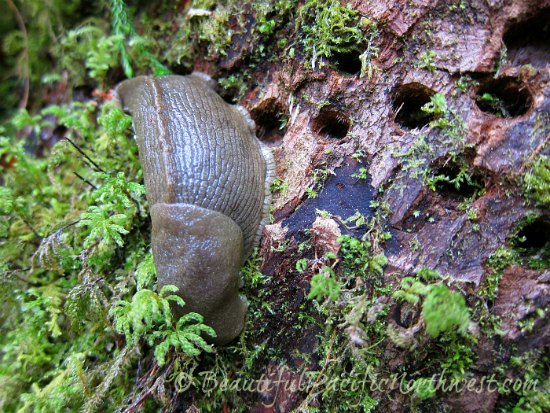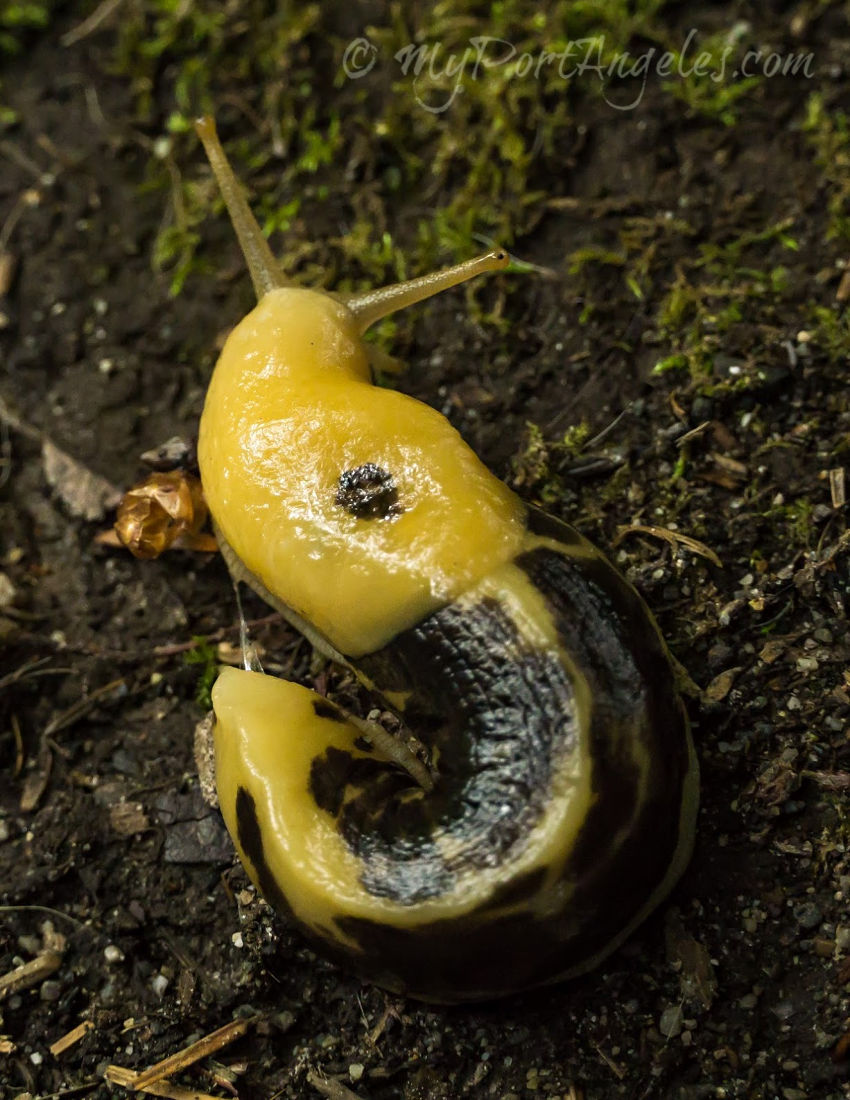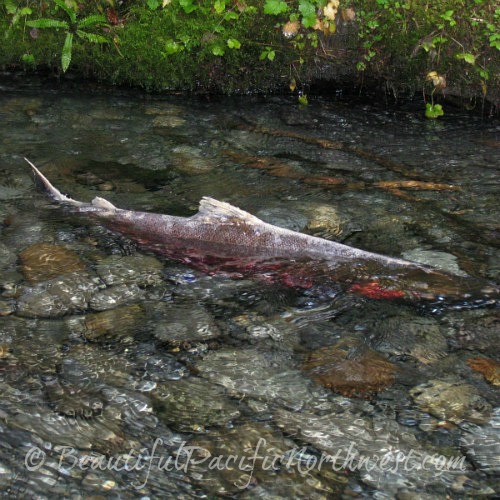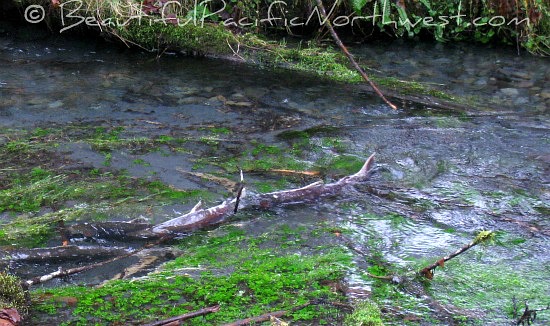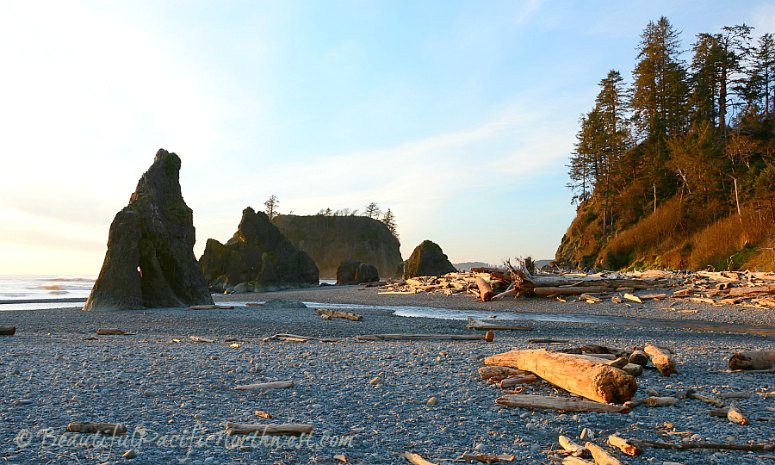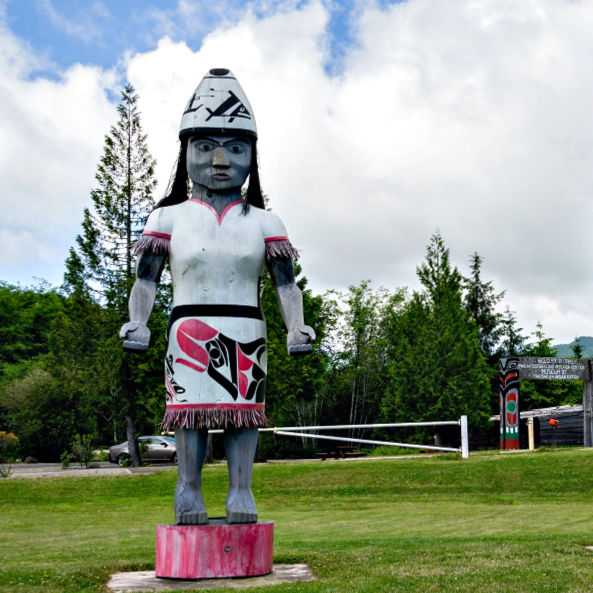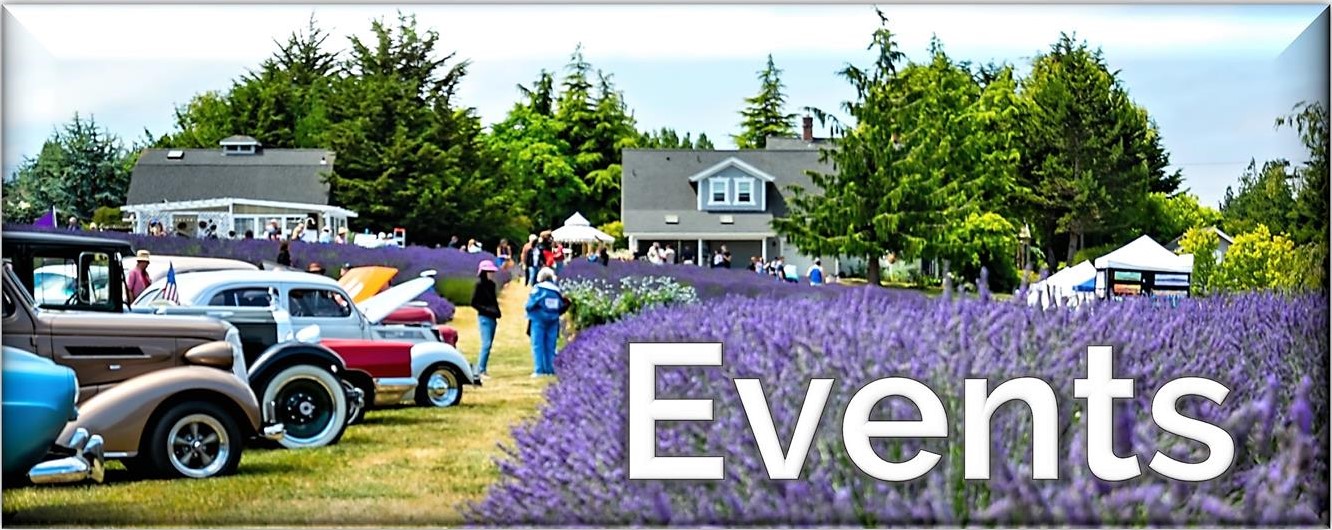Hoh Rain Forest Photos
Hoh Rain Forest Photos: Seasonal photo montage of the Hoh Rainforest and Hoh River, plus photo illustrations and explanations of typical temperate rain forest features.
Enjoy the Hoh Rain Forest
It's Easy to Enjoy the Hoh Rain Forest:
- The Hoh Visitor Center provides complete information and answers to your questions
- Picnic areas and day use areas are close at hand
- The Hoh Campground is on site - first come first served. For details, see Olympic National Park Camping
Moss and Ferns ... Everywhere
Epiphytic ferns and many species of moss grow profusely throughout the rain forest.
Hallmarks of the Rain Forest
Oregon Oxalis (Redwood Sorrel)
It's not a proper temperate rain forest unless Oregon Wood Sorrel (Oxalis oregana or Oregon Oxalis) grows on the forest floor, I'm told. Wood Sorrel closely resembles its cousin, the Irish Shamrock.
It folds up like a tent when harsh sunlight, raindrops, or humans touch it, and unfurls its three heart-shaped leaves once again when the all-clear sounds.
At right: Oregon Oxalis on the floor of the Hoh Rain Forest, all folded up like a tent, a skill called nyctinasty which was triggered by bright sunlight.
Below: Some areas in the Hoh Rainforest are literally covered in Oregon Oxalis.
Trillium
Trillium is also found throughout the rainforest. It blooms white in the spring, and then ages to a dark red.
More Rain Forest Hallmarks:
Colonnades, Stilt Trees, Nurse Logs
From death springs life.
One sees the circle of life played out everywhere in the temperate rain forest. An ancient tree gives up the ghost and thumps heavily to the ground. Moss and ferns soon begin to cover the old behemoth. Seeds fall from the giant trees still standing around it onto the wet moss covering the prone trunk.
The seeds sprout (pictured below). Seedlings put forth roots into the decaying wood, become saplings, and then trees, nourished by the rotting bones of the fallen tree, now known as a nurse tree or nurse log.
In 200 years, these saplings and others will have formed a colonnade such as the ones pictured above and below.
Below:
- Colonnades of trees all in a row are evidence of the existence of a nurse log in a bygone era.
- Stilt trees: The exposed roots of trees on "stilts" are all that remain when its nurse tree has completely rotted away.
Pictured at left: Two trees wrestle for supremacy atop a rotting nurse stump.
On the left in the foreground is a snag that lost its battle for survival years ago.
In the Hoh, Giant Trees...
Right: This snag has been standing for many years. It has lost its bark in areas, and lichens are growing, which do not grow on living trees.
Below: Can you see my friend Candi hugging the ankles of the giant snag?
... Fall Hard.
The 500+ year old renowned "Big Sitka Spruce" standing along Upper Hoh Road toppled in a storm in December, 2014.
Until it fell, it was the 5th largest tree in the area, at 12.5 feet diameter and 270 feet tall.
It now lies on the forest floor, nothing but a dead snag left standing.
Above: This Sitka will become another nurse tree among the many that litter the floor of the Hoh rain forest, completing the circle of life for following generations of trees.
More (Living) Giant Trees in the Hoh Rain Forest
Above: My friend Candi standing at the foot of this very large Sitka Spruce helps to illustrate the scale of these giant trees. This one is certainly immense, but still just a teenager compared to the Big Sitka Spruce that fell in 2014.
Right: This Sitka Spruce tree towers over the rain forest. It might be 250 feet tall.
Mossy Big Leaf Maple Trees
More Flora in the Hoh Rain Forest
Hoh Rain Forest Fauna
Roosevelt Elk
Left: We encountered this very large bull Roosevelt elk in the Hoh Rainforest in May 2015. This photo was taken in May; his velvet-covered antlers had just started growing for the season.
Although elk usually migrate to summer and then winter forages, several Roosevelt elk herds live in the Hoh rain forest year round due to the plentiful food sources.
Banana Slugs
Below: As banana slugs go, this is a small one; they grow to up to 10 inches long. This one was 4 feet off the forest floor on the bark of a tree, munching on mosses.
Salmon in the Hoh
Left and Above: These battered Coho Salmon were spawning in early January. Pacific salmon die upon completion of the spawn.
Photos can give you a taste, but there is no way to fathom the glory of the rain forest without actually visiting for yourself. We hope you will do that!
Olympic National Park: Hoh Rain Forest
Towns Near the Hoh Rain Forest
Port Angeles is about 88 miles (141.6 km) away from the Hoh Rain Forest, or a drive of approximately 2 hours.
If Port Angeles is not your starting point, then:
- Forks is 31 miles (49.88 km) roughly a 50 minute drive
- Aberdeen, WA, is 112.4 miles (181 km) away, about a 2.5 hour drive
Have You Been to This Beautiful Place?
Tell Your Story and Share Your Photos With Us!
Tell Your Story and Share Your Photos With Us!
Nature can present us with unexpected, memorable, and breathtaking moments! Do you have a great story or an interesting experience that took place in this beautiful part of the Olympic National Park? We'd love to hear about it! Feel free to share it in the form below. Be as wordy and as descriptive as you like. Include photos as well, if you have them; there is plenty of room for it all on our website.
Just click into the title box below and go from there. When published, you'll have "your own" page on MyPortAngeles which you can share with friends or anyone who asks!
We're happy to ensure professional and amateur photographers get credit for their work. Leave us your name in the form below, and means of contact, website, or FB page info so we can link back to you.
